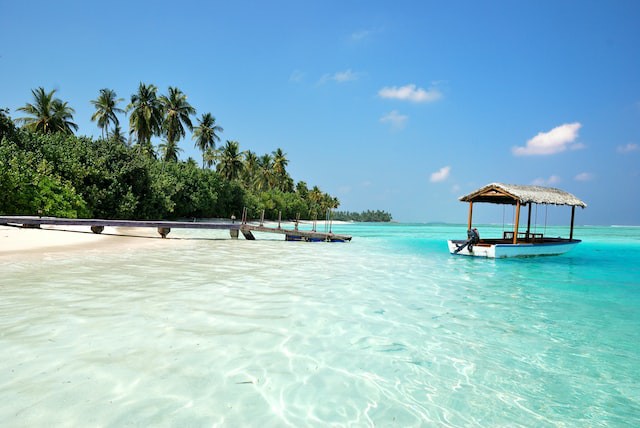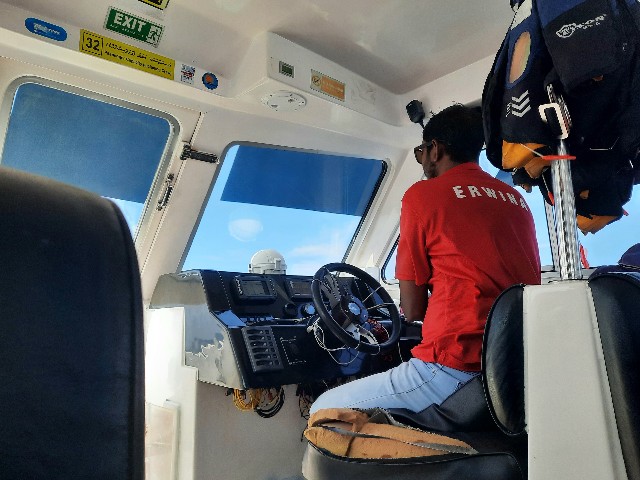
Hello, this is Yamu, a drone pilot. Since I received various responses when I wrote an article about bringing drones overseas before, this time I’d like to explain the actual process of applying for and obtaining permission to fly drones overseas.
I recently brought a drone to the Maldives and flew/photographed with it, so I’ll describe the process using that experience as a case study.
[:contents]
Check Local Laws and Permit Systems
The first necessary step in flying a drone overseas is to check the local laws, permit systems, and required documents for obtaining permission. In some countries, bringing in drones may be completely prohibited, or flight permits may not be issued to general travelers at all.
In the case of the Maldives, as expected of a country that relies on tourism, bringing in drones for leisure purposes was OK. However, to fly a drone within the Maldives, you need to obtain flight permission in advance.
Flight permission applications are to be submitted to two agencies: MNDF (Maldives National Defense Force) and CAA (Civil Aviation Authority). The former is like a defense agency, while the latter is similar to an aviation agency. Indiscriminate drone flights could pose a threat to national peace and aviation traffic safety, so permission is only granted after careful review by these agencies.
Check Required Documents
After understanding the local laws and permit system, the next step is to gather the necessary documents. In the Maldives, along with the designated application form, you need to submit the specifications and manual of the drone you’ll be flying, a flight area map, and photos of the drone itself.
I’ll explain the details of filling out the application form later, but first, you can’t proceed with filling out the form or creating a flight area map without determining the flight location. So, the next step is to decide on the flight location and create an area map.
Create a Flight Area Map
Not only in the Maldives but also in most countries around the world, including Japan, it’s a common rule that when flying a drone, you need to accurately determine the flight location in advance and communicate it to the appropriate authorities. In the Maldives, you complete this process by specifying the flight area in the permit application and attaching a flight area map.

For the flight area map, a simple one like this image, showing the flight range with a red circle, is sufficient. Along with this, make sure to note down the latitude and longitude of the flight area (this will be necessary for the CAA application).
Submit Application to MNDF and Receive Permit
After deciding on the flight location, fill out the application form. In the review process, you first need to have a permit issued by MNDF, and then use that permit to apply for permission from CAA. The application form for MNDF can be obtained from the link below. However, as the form is frequently revised, it’s better to contact MNDF in advance and ask them to provide the latest form.
MNDF Application Form: https://www.caa.gov.mv/attachments/C3Rg4JqeH5xGEqehipuxiMgOZARdLWzTjNUvVK24.pdf
In the application form, you’ll fill in personal information about the operator, flight area, flight date and time, etc. If there are no issues with the content, the application form will be stamped and returned to you as a permit.
For how to fill out the application form and basic letter writing, I recommend referring to the past article below to understand the basics and avoid being disrespectful to the other party.

Submit Application to CAA and Receive Flight Permission
After receiving the permit from MNDF, you then apply to CAA. For CAA, you need to submit an application in a different format from MNDF.
CAA Application Form: https://www.caa.gov.mv/attachments/JxulUOCqryQSAMAEPLyIYNDQMzmiCLMqnpjXMJJJ.pdf
Here, you’re required to enter the exact latitude and longitude of the flight location, so make sure to fill it out while checking for consistency with your flight map.
Once completed, email the application form, flight map, and permit from MNDF to CAA. If there are no issues with the content, you’ll receive an email reply stating that the flight is OK. If there are problems, you may receive instructions such as altitude restrictions, or be asked to correct the content as flight is not possible, so follow the instructions and modify your application accordingly.
Unlike MNDF, which is in charge of national defense, CAA is responsible for aviation safety. Therefore, flight plans that might pose a risk of collision with other aircraft may not be approved for aviation safety reasons. It’s important to note that just because you obtained permission from MNDF doesn’t necessarily mean you’ll get approval from CAA as well.
Get Drone Insurance
Also, I recommend getting drone insurance that covers overseas flights before flying. There’s always a risk of accidents with drone flights, and even if you follow safety guidelines, unforeseen circumstances can lead to accidents and, in the worst case, liability issues. While insurance is not mandatory for flying in the Maldives, many countries actually require foreigners to have liability insurance when flying drones.
Get Permission from Land Managers
An important final process before flying is to obtain permission from the local land managers. For example, if you’re flying over private homes, you need permission from the homeowners, or if it’s a resort facility, you need flight permission from the resort manager. To avoid situations where you’ve brought your drone all the way to the Maldives only to be denied permission on site, it’s best to contact the managers in advance and get permission if possible.

Other Precautions
There are a few other things you should know in advance when flying a drone in the Maldives.
Days Required for Application
For the series of flight applications described above, I recommend allowing about 3 months. Maldivian government agencies are not very prompt in responding, and there are many cases where emails may not be checked for several weeks. It’s also important to allow time in case you’re asked to modify your application. I recommend starting the above steps no later than 3 months before your planned departure date.
Local Weather Conditions
The weather in the Maldives is very changeable, often dramatically shifting from rain to sun to rain again within an hour. Naturally, typical drones cannot be flown in the rain. Also, the Maldives is very windy throughout, and it’s not uncommon for gusts exceeding 10m/s to blow. Lightweight drones that can be brought on trips may not be able to fly normally in such strong winds, potentially being blown away by the wind, crashing, or becoming uncontrollable.
For these reasons, it’s important to avoid rain and strong winds when flying drones locally, and to set aside reserve days for flying. The day you planned to fly may not necessarily have favorable weather. I recommend scheduling with ample flexibility.
GPS Issues
Also, while DJI drones and others have GPS-based flight tracking functions, you should assume that GPS is unavailable in almost all areas of the Maldives. This means that if you lose sight of your drone during flight, it will be difficult to determine its position using GPS or maps. Be careful not to exceed the range of visual line of sight, and I recommend carefully considering backup plans in case you lose sight of your drone.
How was it?
In this article, we’ve explained the actual process of applying for and obtaining permission to fly drones overseas, using the Maldives as an example. While the hurdles for flying drones overseas are very high, photography and videography using drones are completely different from those taken with smartphones. If you’re interested, please take this opportunity to give it a try!
You can read past drone-related articles here
![[Maldives Local Islands] 3 Local Islands You Can Visit Without a Prior Reservation [2025 Edition]](https://en.kosupatravel.com/wp-content/uploads/2025/03/20240629143118.jpg)




